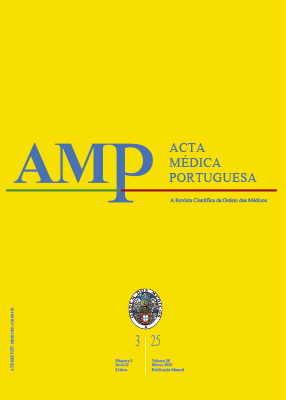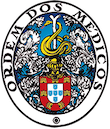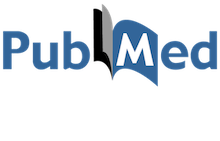Approach to Scabies in Children: An Update
DOI:
https://doi.org/10.20344/amp.22450Keywords:
Child, Scabies/diagnosis, Scabies/drug therapyAbstract
Scabies is a common dermatological infection that globally affects more than 200 million people. It is caused by the parasite Sarcoptes scabiei var. hominis and its transmission primarily occurs through direct contact. Symptoms typically appear three to six weeks after infestation, with intense itching being the most characteristic manifestation. Lesions most commonly appear on the hands, wrists, armpits, periumbilical area, buttocks, and genital region, although the clinical manifestations vary with age. In infants and children, they also affect the face, scalp, palms, soles, ankles, and chest. Therefore, diagnosis is clinical but challenging due to the diversity of manifestations. Treatment aims to eliminate the parasite and relieve symptoms, using options such as topical 5% permethrin, benzyl benzoate, sulfur sulfate, or systemic ivermectin. Permethrin is recommended as the first-line treatment for children over two months, while ivermectin is used in more severe cases. Adherence to treatment and the disinfestation of clothing and bedding are crucial to prevent reinfestation. Early recognition and effective treatment are essential given its prevalence and significant impact on public health, particularly in pediatric populations.
Downloads
References
World Health Organization. Scabies. 2023 [consultado 2024 ago 27]. Disponível em: https://www.who.int/news-room/fact-sheets/detail/scabies.
Santiago F, Januário G. Escabiose: revisão e foco na realidade portuguesa. J Port Soc Dermatol Venereol. 2017;75:129-37. DOI: https://doi.org/10.29021/spdv.75.2.767
Tavares M, Selores M. Escabiose - recomendaçõ es práticas para diagnóstico e tratamento. Nascer Crescer 2013;22:80-6.
Chiriac A, Diaconeasa A, Miulescu R, Chiriac AE, Wollina U. Scabies in infants and children - a narrative review. Eur J Pediatr. 2024;183:2527-36. Erratum in: Eur J Pediatr. 2024;183:2537. DOI: https://doi.org/10.1007/s00431-024-05535-1
Leung AK, Lam JM, Leong KF. Scabies: a neglected global disease. Curr Pediatr Rev. 2020;16:33-42. DOI: https://doi.org/10.2174/1573396315666190717114131
Thomas C, Coates SJ, Engelman D, Chosidow O, Chang AY. Ectoparasites: scabies. J Am Acad Dermatol. 2020;82:533-48. DOI: https://doi.org/10.1016/j.jaad.2019.05.109
Bernigaud C, Fischer K, Chosidow O. The management of scabies in the 21st century: past, advances and potentials. Acta Derm Venereol. 2020;100:adv00112. DOI: https://doi.org/10.2340/00015555-3468
Mbuagbaw L, Sadeghirad B, Morgan RL, Mertz D, Motaghi S, Ghadimi M, et al. Failure of scabies treatment: a systematic review and meta-analysis. Br J Dermatol. 2024;190:163-73. DOI: https://doi.org/10.1093/bjd/ljad308
Ständer S, Ständer S. Itch in scabies-what do we know? Front Med. 2021;8:628392. DOI: https://doi.org/10.3389/fmed.2021.628392
Hill TA, Cohen B. Scabies in babies. Pediatr Dermatol. 2017;34:690-4. DOI: https://doi.org/10.1111/pde.13255
Luo DQ, Huang MX, Liu JH, Tang W, Zhao YK, Sarkar R. Bullous scabies. Am J Trop Med Hyg. 2016;95:689-93. DOI: https://doi.org/10.4269/ajtmh.16-0273
Al-Dabbagh J, Younis R, Ismail N. The current available diagnostic tools and treatments of scabies and scabies variants: an updated narrative review. Medicine. 2023;102:e33805. DOI: https://doi.org/10.1097/MD.0000000000033805
Morgado-Carrasco D, Piquero-Casals J, Podlipnik S. Tratamiento de la escabiosis. Aten Primaria. 2022;54:102231. DOI: https://doi.org/10.1016/j.aprim.2021.102231
Salavastru CM, Chosidow O, Boffa MJ, Janier M, Tiplica GS. European guideline for the management of scabies. J Eur Acad Dermatol Venereol. 2017;31:1248-53. DOI: https://doi.org/10.1111/jdv.14351
Lobo Y, Wheller L. A narrative review of the roles of topical permethrin and oral ivermectin in the management of infantile scabies. Australas J Dermatol. 2021;62:267-77. DOI: https://doi.org/10.1111/ajd.13654
Meyersburg D, Kaiser A, Bauer JW. Loss of efficacy of topical 5% permethrin for treating scabies: an Austrian single-center study. J Dermatolog Treat. 2022;33:774-7. DOI: https://doi.org/10.1080/09546634.2020.1774489
Balestri R, Magnano M, Infusino SD, Rizzoli L, Girardelli CR, Rech G. Scabies is becoming less sensitive to per- methrin therapy. J Eur Acad Dermatol Venereol. 2021;35:e889-91. DOI: https://doi.org/10.1111/jdv.17538
Lluch-Galcerá JJ, Carrascosa JM, Boada A. Epidemic scabies: new treatment challenges in an ancient disease. Actas Dermosifiliogr. 2023;114:132-40. DOI: https://doi.org/10.1016/j.ad.2022.07.028
Saeed A, Tariq S, Iqbal M, Ismaeel H, Mashhood A, Raza MH, et al. Study comparing topical ivermectin versus topical permethrin in the treatment of scabies. Cureus. 2023;15:e48746. DOI: https://doi.org/10.7759/cureus.48746
Levy M, Martin L, Bursztejn AC, Chiaverini C, Miquel J, Mahé E, et al. Ivermectin safety in infants and children under 15 kg treated for scabies: a multicentric observational study. Br J Dermatol. 2020;182:1003-6. DOI: https://doi.org/10.1111/bjd.18369
Bécourt C, Marguet C, Balguerie X, Joly P. Treatment of scabies with oral ivermectin in 15 infants: a retrospective study on tolerance and efficacy. Br J Dermatol. 2013;169:931-3. DOI: https://doi.org/10.1111/bjd.12454
Downloads
Published
How to Cite
Issue
Section
License
Copyright (c) 2025 Acta Médica Portuguesa

This work is licensed under a Creative Commons Attribution-NonCommercial 4.0 International License.
All the articles published in the AMP are open access and comply with the requirements of funding agencies or academic institutions. The AMP is governed by the terms of the Creative Commons ‘Attribution – Non-Commercial Use - (CC-BY-NC)’ license, regarding the use by third parties.
It is the author’s responsibility to obtain approval for the reproduction of figures, tables, etc. from other publications.
Upon acceptance of an article for publication, the authors will be asked to complete the ICMJE “Copyright Liability and Copyright Sharing Statement “(http://www.actamedicaportuguesa.com/info/AMP-NormasPublicacao.pdf) and the “Declaration of Potential Conflicts of Interest” (http:// www.icmje.org/conflicts-of-interest). An e-mail will be sent to the corresponding author to acknowledge receipt of the manuscript.
After publication, the authors are authorised to make their articles available in repositories of their institutions of origin, as long as they always mention where they were published and according to the Creative Commons license.









